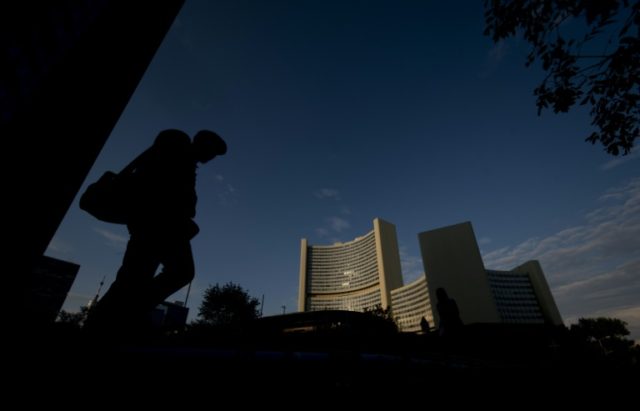Vienna (AFP) – The UN’s nuclear watchdog, the International Atomic Energy Agency (IAEA), has the delicate task of verifying the terms of the Joint Comprehensive Plan of Action (JCPOA) between world powers and Iran over the country’s nuclear programme.
The agreement was derided by US President Donald Trump as “the worst deal ever” and its existence will be thrown into doubt if, as expected, he withdraws the US from the accord on Tuesday.
– What role does the IAEA have in Iran? –
Created in 1957 and based in the Austrian capital Vienna, the IAEA promotes peaceful uses of atomic energy – in scientific research for example – while at the same time overseeing efforts to detect and prevent possible nuclear weapons proliferation.
Because of previous international concern over its nuclear programme, in a 2003 agreement Iran allowed snap IAEA inspections of its nuclear facilities.
However, co-operation broke down in 2006 with the IAEA referring Iran to the UN Security Council, which went on to impose sanctions, and Iran halting enhanced IAEA inspections.
A renewed diplomatic push produced the JCPOA, under which the IAEA is charged with regular inspections of declared facilities in Iran such as uranium mines and centrifuge workshops for up to 25 years.
The deal also included an “Additional Protocol”, which allows inspectors “to conduct complementary access to any location in Iran”.
– How do IAEA inspections work? –
The IAEA insists the inspection regime put in place by the JCPOA is the world’s toughest.
In March the IAEA’s Director General Yukiya Amano said: “Our inspection work has doubled since 2013. IAEA inspectors now spend 3,000 calendar days per year on the ground in Iran”.
He also pointed to the some 2,000 tamper-proof seals attached to nuclear material and equipment and to the “hundreds of thousands of images captured daily by our sophisticated surveillance cameras”, the number of which has almost doubled since 2013.
The IAEA has issued numerous quarterly reports certifying Iran’s compliance with the deal, most recently in February.
Amano has called the JCPOA “a significant gain for verification” and said its failure “would be a great loss for nuclear verification and for multilateralism”.
– Agency under pressure –
Inevitably in such a charged geopolitical question, some countries have said the JCPOA does not hold Iran to a high enough standard.
The deal has come under fire particularly from Iran’s regional arch-foe Israel, especially over how it addressed the vexed question of the so-called historic PMD (Possible Military Dimension) of Iran’s nuclear programme.
In 2015 the IAEA’s 35-nation board of governors voted to close a 12-year probe into the PMD issue after the Agency concluded that “a range of activities relevant to the development” of a nuclear bomb took place in Iran until 2009 but that there were no credible indications they had continued after that date.
Israel criticised the resolution, with Energy Minister Yuval Steinitz telling local media that the IAEA board’s decision was “political and not practical, and… sends a wrong message to the Iranians, that the international community is willing to look the other way”.
Since the election of US President and fervent JCPOA critic Donald Trump, the IAEA’s task of navigating the increasingly heated debate around the deal, while retaining its scrupulously apolitical stance, has only grown more complex.
In August 2017 US envoy to the UN Nikki Haley urged the IAEA to widen its inspections, including to military sites.
Iran’s nuclear chief Ali Akbar Salehi responded by saying Iran was “confident that the (IAEA) will resist such unacceptable demands and continue to execute the agency’s… role with strict objectivity”.

COMMENTS
Please let us know if you're having issues with commenting.